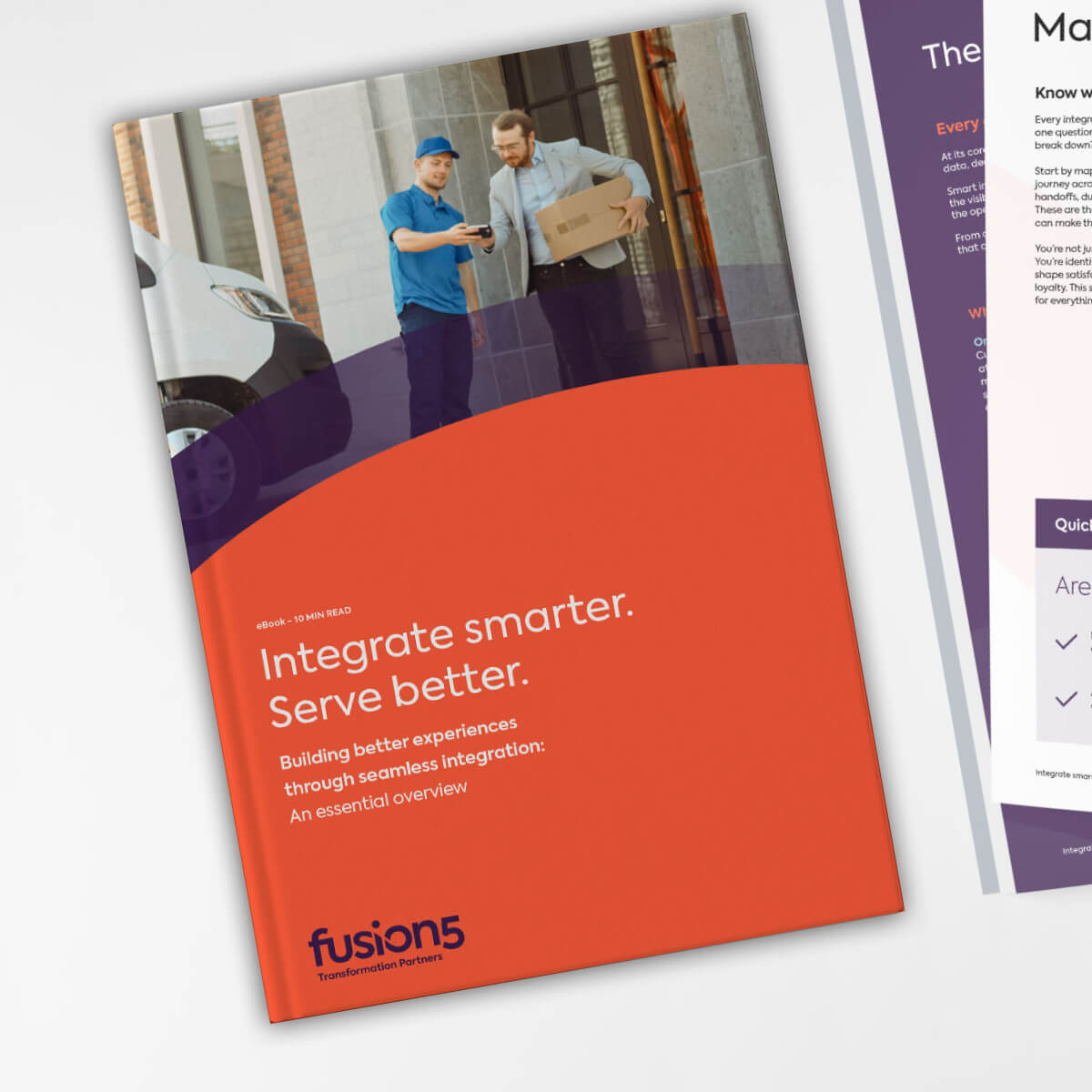
When your customers place an online order, they (whether they’re B2C or B2B) expect everything to arrive at once and they get annoyed when it doesn’t.
We bet that every CX leader has heard the same apology-laden script a call-centre agent recites when an order arrives in three boxes instead of one: “I’m sorry, the items came from different fulfilment centres…not everything was in the warehouse - so we sent out what we could…item X was on backorder, but we didn’t want to hold the rest up…”
So, why was the shipment split in the first place?
Regardless of the reasons presented to your aggravated customers, one thing you can be certain of is that, behind that long list of excuses lies a tangle of siloed applications.
These include:
- Store inventory systems that update nightly (rather than in real-time),
- Manually uploaded CSV files,
- An e-commerce platform that maintains its own stock tables (and ignores the rest), and
- A transport-management system (TMS) that only sees what’s handed to it.
In short: You’re paying the price for having disconnected inventory, order management, and logistics systems.
What do split shipments cost you?
We all know that customers are unafraid to be vocal (especially on social media platforms) when they are unimpressed. As well as affecting a decline in your NPS and brand perception, having one box arrive on time and the rest days later can impact freight bills and consume limited customer support capacity.
Inflated freight bills:
Large companies with high order volumes, in particular, can quickly rack up extra logistical, labour, and overhead costs to cover additional packaging. Various industry sources report that split shipping adds anywhere from 18% to 30% to freight and handling, and transportation costs - and passing these costs on to your customers is not ideal.
Unhappy customers and service agents (and environmental officers):
Multiple deliveries confuse customers and drive up the number of “Where’s my order?” calls to your contact centre, unnecessarily consuming agent time (and patience).
In addition, when items from a single order arrive at different times, your customer might start to organise returns for some products before they’ve even seen the balance of the ‘yet to arrive’ order. This random approach to returns not only complicates the returns process but also adds to your carbon footprint - including extra fuel consumption and additional packaging - as items are repacked and shipped back individually.
How can you turn split shipments into seamless ones?
That’s an excellent question. Our answer: By integrating inventory, order management and logistics, you’ll reduce split shipping, cut freight costs and deliver a smoother (and happier) experience.
When you integrate these systems via API-first connections and event-driven updates, you can create a single source of truth for stock location and availability. That’s a great outcome for both your business and your customers – but more on this later.
The what’s what of integration
We know it’s easy for us to throw in technical terms (sadly, it’s part of the job description when you work in IT!) when you’re mainly interested in business outcomes. While we expect some more technical readers to skip past this section, it’s worth understanding some of the most important integration-speak terms we’ve mentioned, and why they’re important.
What's API-first?
This approach utilises APIs (Application Programming Interfaces) as the standard method for connecting systems. APIs translate between one application and another – understanding what you're asking for, knowing how to get it, and delivering it back to you. These days, RESTful APIs are the industry standard – they utilise HTTP requests to access and use data, so they require less bandwidth, making them faster and more efficient. (Sorry, probably more technical information than you wanted to know.)
So, how does an API work in an e-commerce situation? Imagine this: Your customer places an online order, and the API instantly updates your ERP, warehouse, and CRM with the new information. All in real-time without anyone having to lift a finger.
Why does this matter? This approach makes integrations reusable, easier to maintain, and faster to extend as you onboard new partners or channels.
What’s an event-driven update?
Event-driven architecture (EDA) allows your software components to communicate by producing and responding to events. So, instead of relying on batch updates, your systems will react to “event updates” (such as an order being placed, a payment being processed, or stock being received) in real-time.
What does this mean to you? Imagine your online customer buys the last Item X that you have in stock. Well, that “event” immediately updates inventory in the store, so you can’t inadvertently sell product you don’t have.
Why is this a good thing? Your customers expect you to be fast and responsive – and they certainly don’t want to face the disappointment of ordering a product only to be advised afterwards that it’s out of stock, forcing them to look elsewhere.

Integration – what’s in it for you?
Again, another great question. And we’ve got some great answers:
Reduced customer friction and operational overheads
When your shopper’s basket is authorised, the integration layer calculates fulfilment options in milliseconds. The majority of orders can now be shipped in a single parcel, resulting in significant savings on packaging and last-mile delivery fees. And contact-centre volumes linked to “split shipment” will shrink accordingly (delighting your CX leader).
Improved transparency of delivery times
Because the same event bus (the middleware that acts as a central communications hub in event-driven architecture) carries carrier scan data, the order-tracking page and the service agent’s dashboard all show identical, real-time ETAs. That means you can use proactive SMS or WhatsApp notifications to advise customer where their delivery is and deflect all of those “Where is my order?” and “Where is the rest of my order?” calls to your contact centre.
Stronger customer satisfaction = more repeat purchases, less cost
Fewer split shipments mean fewer returns, fewer disposition writes-offs, and a greener footprint. All of which ticks boxes for the modern consumer and ESG-minded investor!
Meanwhile, marketing spends less on appeasement coupons for disappointed customers, and your sustainability metrics improve.
A happy technical team
With a loosely coupled, governed, and observable architecture that can plug in new sales channels, 3PLs, or micro-fulfilment nodes without another winter of code freezes, integration is no longer a project; it is a continuously refined product that delivers bottom-line results.
Are you ready to close the gap between what customers expect and what your stack can deliver? Talk to Fusion5’s integration team about turning siloed systems into a unified, event-driven backbone - and make split shipments a thing of the past.
Table of contents




